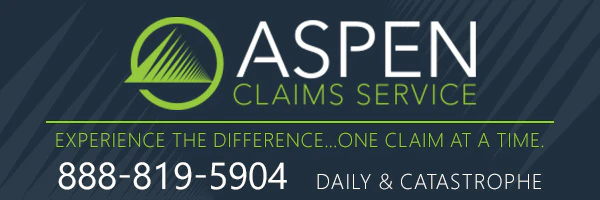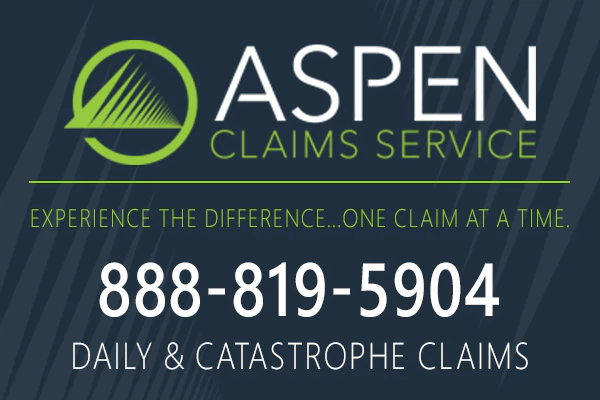
Together for Success: Collaborative Claims Handling with Carriers
Sunday, July 9th, 2023 Claims Pages Staff Mastering Relationship Building in the Insurance LandscapePicture this: You’re at the heart of a bustling metropolis. Skyscrapers pierce the sky, cars whizz past, and a flurry of activity surrounds you. Each element is essential, forming a symbiotic relationship that gives life to the city. Now, think of insurance claims handling as such a metropolis, where every stakeholder plays a vital role. And within this cityscape, one of the most vital partnerships is the one you, as a claims professional, share with your carrier partners.
Let’s liken the claims process to a dynamic urban planning project. In this sprawling city of insurance, you and your carriers are co-architects, collaborating to design and manage the skyline of claims resolution. You work together, strategizing, planning, and problem-solving, aiming to create a seamless claims handling process that’s as impressive as the most well-designed cityscape.
In this cityscape, clear communication is the highway that connects you, responsiveness the traffic signals that direct your journey, and alignment of goals and objectives the blueprints that guide your urban design. The end result? A well-oiled claims handling metropolis where both you and your carrier partners prosper.
Building the Highway: The Importance of Clear Communication
Imagine the highway that connects different parts of our metropolis, enabling smooth, swift travel. In the landscape of claims, clear communication serves a similar function, connecting you and your carrier partners, enabling effective collaboration.
Like urban planning, claims handling is rife with complexities. To navigate these, clear communication is paramount. It’s about being able to explain the intricacies of a claim to a carrier, answering their questions, and keeping them informed about progress and hurdles. The more transparent and regular your communication, the easier it is to foster mutual understanding and cohesiveness.
Let’s consider a scenario. You’re handling a claim with multiple legal implications. Instead of sharing piecemeal information, you offer the carrier a comprehensive overview, explaining the legal aspects, potential challenges, and your strategy. This clear communication fosters a shared understanding, enabling you and your carrier partner to navigate the complexities together.
Just like the highway is the backbone of our city, enabling movement and connection, clear communication is the backbone of effective claims handling, fostering understanding and collaboration. But a highway alone does not make a city functional. It needs traffic signals to guide the flow. That’s where our next element comes into play - responsiveness.
Directing the Traffic: The Role of Responsiveness
In our claims metropolis, responsiveness serves as the traffic signals that guide the flow of activities. Just as traffic signals respond to varying conditions to ensure smooth traffic flow, your responsiveness in managing claims can help ensure the smooth flow of information and decisions between you and your carrier partners.
Consider the dynamic nature of claims handling. Information and circumstances can change rapidly, demanding quick adaptation and response. For instance, new information about a claim might emerge, necessitating a shift in strategy, or a carrier may have pressing queries that need swift responses. In such scenarios, your ability to respond promptly can make all the difference in maintaining the flow of our metaphorical traffic, ensuring that the claims handling process moves forward efficiently.
Imagine a scenario where new evidence emerges in a complex liability claim, altering its landscape. As the claims adjuster, you take the lead, swiftly evaluating the evidence, revising your strategy, and communicating the changes to your carrier partner. Your prompt response to this changing scenario keeps the claims process moving smoothly, akin to a well-coordinated traffic system.
But it’s not just about quick reactions; it’s also about being proactive. Proactive responsiveness involves anticipating possible roadblocks and making preemptive moves. In our city analogy, it’s like planning for peak traffic times or potential accidents by adjusting signal timings or arranging for detours in advance.
In a claims context, this could mean identifying potential hurdles in a claim and communicating these to your carrier partner ahead of time. Or it could be about proposing solutions or alternatives even before issues fully manifest. By being proactive, you not only manage current situations more effectively but also pave the way for smoother journeys in the future.
So, responsiveness, in both its reactive and proactive forms, serves as the traffic signals of our claims city, directing the flow of activities and ensuring smooth navigation. But even the best highways and traffic signals can’t function optimally without a well-laid plan - the blueprints that guide the design and development of the city. Similarly, in claims handling, these blueprints come in the form of shared goals and objectives.
Shared goals and objectives align you and your carrier partners towards a common vision, setting the direction for your collective efforts. Just like urban planners agreeing on the blueprint for the city, you and your carriers must agree on the approach and objectives for claims handling.
This might involve discussing and agreeing on the claims strategy, desired outcomes, timelines, and roles. It’s about ensuring that both you and your carriers are on the same page about what you’re collectively working towards, what success looks like, and how you’ll get there.
Through the alignment of goals and objectives, you and your carriers form a cohesive team, working in unison towards a shared vision. You transform from individual entities into a collective force, each complementing and enhancing the other’s efforts, all moving in harmony towards a common end goal - effective, efficient, and fair claims resolution.
In the next part of this urban expedition, we’ll delve into practical tips on how to foster this goal alignment and work collaboratively with carriers.
Designing the Blueprint: Aligning Goals and Objectives
Aligning goals and objectives with carriers is like laying out the city blueprint. It’s about creating a shared vision for the future skyline of our insurance metropolis. This shared vision becomes the reference point, guiding your decisions, actions, and collaborations.
So, how do you go about creating this shared blueprint with your carrier partners? It starts with understanding. Understand your carrier’s objectives and expectations from the claims handling process. This might involve discussing their perspective on the claim, their approach to similar claims in the past, their desired outcomes, and their apprehensions.
Next, share your own perspective. Discuss your assessment of the claim, your proposed strategy, the potential challenges, and your expectations from the carrier. Make sure to address any queries or concerns they might have, fostering mutual understanding.
Once both perspectives are out in the open, start aligning. Identify the commonalities between your and the carrier’s perspectives and use these as the foundation for your shared objectives. Discuss and agree on the desired outcomes, the strategy to achieve these, and the roles each of you will play. Make sure to consider both short-term and long-term goals, balancing immediate claim resolution with sustained partnership success.
For example, in a complex property damage claim, the carrier might be focused on minimizing costs, while you might be more focused on ensuring a fair and comprehensive resolution. In this case, your shared goal could be to achieve a resolution that balances cost-effectiveness with fairness, aligning both of your objectives.
Constructing the Cityscape: Working Collaboratively
Once the blueprint is in place, it’s time to start constructing your cityscape, or in claims terms, to start working collaboratively towards your shared goals. This involves working together on every stage of the claims handling process, from investigation and evaluation to negotiation and resolution.
In this collaborative model, you and your carrier partner work as a team, bringing your unique strengths and insights to the table. You support each other’s efforts, enhancing the efficiency and effectiveness of the claims process.
For instance, in the investigation stage, you could work together to gather evidence, sharing resources, and insights. In the evaluation stage, you could jointly analyze the claim’s worth, bringing in your respective expertise to arrive at a fair estimate. In the negotiation stage, you could strategize together, aligning your negotiation tactics to the agreed objectives. Finally, in the resolution stage, you could jointly decide on the final settlement, ensuring it aligns with the shared goals.
This kind of collaborative approach goes beyond just efficient claims handling; it builds stronger, more trusting relationships between you and your carriers. It fosters mutual respect, understanding, and loyalty, reinforcing your partnership for future claims.
Consider this: an urban planning project that’s executed collaboratively, where all stakeholders work together, sharing insights, resolving issues, and contributing to the city’s growth. Isn’t that likely to be more successful, more harmonious, and more sustainable? The same principle applies to claims handling.
So, armed with clear communication, responsiveness, and aligned goals and objectives, you’re well-equipped to work collaboratively with your carriers, and build a thriving claims handling metropolis. But we’re not quite done with our urban expedition yet.
Exploring the Metropolis: Real-World Examples of Collaboration
Our bustling metropolis of claims handling wouldn’t be complete without some real-world examples. Let’s explore how claims professionals like you have collaborated successfully with their carrier partners, creating thriving cityscapes of claims resolution.
Consider the case of a large-scale disaster claim. The sheer magnitude of the claim presented a myriad of challenges, from assessing the extensive damage to managing the high claim volume. In this complex scenario, the claims professional and their carrier partner worked together, each bringing their unique strengths to the table. They shared resources for damage assessment, collaborated on strategizing the claims handling process, and jointly managed the claimants’ communications. Despite the complexity and scale of the claim, they were able to manage it effectively, achieving a fair and timely resolution.
Or consider the case of a contentious liability claim. The claim involved multiple parties and had significant legal implications. The claims professional and the carrier took a collaborative approach, discussing their perspectives, aligning their strategies, and jointly managing the legal process. They each leveraged their legal expertise, offering insights, debating possibilities, and finally arriving at a shared strategy. With their combined efforts, they were able to navigate the legal complexities and achieve a fair resolution.
In both these examples, the claims professionals and their carrier partners worked as co-architects of their claims cityscape. They communicated clearly, responded promptly, aligned their goals, and worked collaboratively, each enhancing the other’s efforts. And the result? A thriving claims handling process, as impressive as any well-designed city.
Conclusion: Thriving Together in the Claims Metropoli
As we conclude our urban expedition through the metropolis of claims handling, let’s take a moment to admire the cityscape we’ve explored. The highways of clear communication, the traffic signals of responsiveness, the blueprints of aligned goals, and the bustling cityscape of collaboration. These elements, working together, create a thriving claims handling process where you and your carriers prosper together.
Building strong relationships with carrier partners isn’t about one-off interactions or isolated transactions. It’s about creating a shared journey, a collaborative adventure through the bustling city of insurance claims. It’s about being co-architects, designing and managing the cityscape of claims handling together.
As a claims professional, you have the opportunity to foster these collaborations, to build these cityscapes. Use clear communication to bridge gaps, responsiveness to navigate changes, and goal alignment to create shared visions. Work collaboratively with your carriers at every stage of the claims process, enhancing the efficiency, effectiveness, and fairness of claims resolution.
In the end, remember that every claim is a new urban planning project, a new opportunity to collaborate, innovate, and thrive. As you return to the hustle and bustle of your own insurance metropolis, take these insights with you. Here’s to more successful collaborations, more impressive cityscapes, and more thriving journeys through the metropolis of insurance claims.
Augment your mastery in the art of relationship building by delving into the other articles within our editorial series. Each piece illuminates a specific aspect, offering valuable insights and actionable tips to strengthen your relationship-building skills. From harnessing emotional intelligence to understanding cultural gaps, from leveraging technology and digital communication to the importance of ethics and transparency, our series addresses the crucial components of forging strong relationships in the insurance industry.

